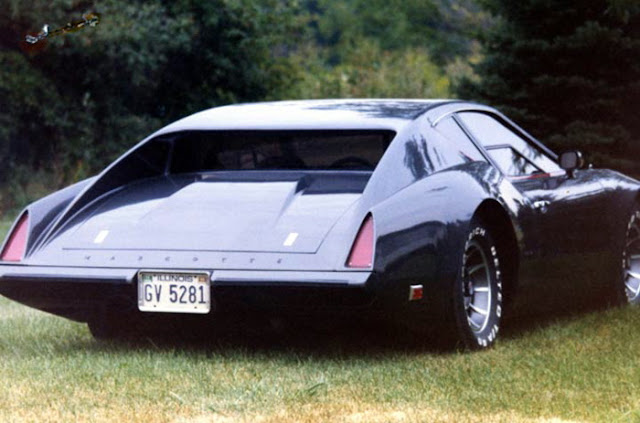Miura, a Brazilian Icon
Miura was a brand of sportscars built in Porto Alegre, Brazil by the company Besson, Gobbi & Cia. Ltda., which was one of the most prolific and creative manufacturers of limited production, specialty cars to ever appear in Brazil.
Miura's history, as a marque, began in 1975 when gaucho partners Aldo Besson and Itelmar Gobbi decided to expand their various business holdings in banking and automotive accessories, in order to produce a Brazilian sports car with striking design and refined finish.
Based on a drawing by Nilo Laschuck, then an architecture student, the Gauchos presented the first Miura, sport, in 1977.
Based on a drawing by Nilo Laschuck, then an architecture student, the Gauchos presented the first Miura, sport, in 1977.
Known for its memorable styling, it featured wedge-shaped fiberglass bodywork, concealed headlights, wipers hidden under the hood, and a steeply raked windshield. The Miura drew major attention for its modern and bold look, when introduced.
 |
| Looking like something that could have come from Bertone, Ghia, or ItalDesign this was the prototype Miura Sport shown in '77. |
The car also had a unique rear fascia with exclusively manufactured taillights and an injection molded, plastic bumper which tucked neatly into the shape of its hind quarters. The Miura also had bespoke 14" alloy wheels, shod with 185/70 tires.
Another highlight of the model was its impressive interior finish. Nylon-clad, including details on the dashboard, it had a fully upholstered interior, with headliner, and a carpeted floor. Few Brazilian made cars at the time had this level of style, quality, and attention to detail.
Still inside, the seats were ergonomic and comfortable, with a distinctive rectangular design and adjustable headrests, with matching nylon upholstery. In addition, its traditional instrument panel was accompanied by another module in the center of the dash, containing the voltage, temperature, oil pressure, and fuel gauges.
Still inside, the seats were ergonomic and comfortable, with a distinctive rectangular design and adjustable headrests, with matching nylon upholstery. In addition, its traditional instrument panel was accompanied by another module in the center of the dash, containing the voltage, temperature, oil pressure, and fuel gauges.
 |
| A late series Miura Sport interior, somewhat more traditional than the original, but with upgraded trim and finish. |
Sadly, while the Miura was eye catching in its style, fit, and finish, the same could not be said about its performance. Like many others, among its contemporary rivals, the Sport also used VW mechanicals. In this case the engine was a 65hp, 1.6 liter air-cooled engine of limited performance which came from the Brasilia. It had a top speed of only 83mph and acceleration from 0 to 60pmh took place in about 20 seconds. The gearbox was a four-speed manual, with disc brakes at the front and drums at the rear, however it did have an independent front suspension. So, that was a plus!
Later, the Sport II (1981) would receive an engine from the, new at the time, Passat TS. This gave the model a little more power to match its exotic looks. Now with 88hp at 5,800 rpm and maximum torque of 94ft⋅lb, the Miura Sport reached 110mph, with acceleration from 0 to 60 in just 11.5 seconds. Needless to say this was a significant improvement, maybe even brisk, by the standards of the day.
Even if the engine did not excite, initially, the Sport more than compensated in its appointments. As standard, the model had an electric titling steering wheel, something unheard of for Brazilian cars, and adjustable pedals, allowing the driver to configure their own ideal driving position. Rounding out the list, optional equipment included a radio with cassette player, power windows, and air conditioning.
Many Miura versions followed the Sport and were produced in considerable numbers, for such a niche car in Brazil. However, with the reopening of the import market in the early 1990s, the consolidated Japanese, American and European brands entered the scene with very attractive models, at more affordable prices. This sealed the fate of Brazilian specialty makes like Puma, Ventura, and countless others.
 |
| A selection of Miura cars from over the course of the Brand's history. Left to right: Miura Top Sport, Miura Saga, Miura Sport, and Miura Sport 2. This isn't even the full range of models produced |
Miura's story ended in '92, bowing out as the most successful sportscar brand in the country's history. It remains honored by a legion of fans and owner's clubs across Brazil to this day.
Sources:
 |
| Left to right - Miura Saga and Miura Sport 2 |
 |
| 1978 Miura Sport, showing it door cards, dash, and hatchback. High style, especially for '78 in Brazil. With a better engine, it might have been an international contender... |
 |
| 1978 Miura Sport |
 |
| 1978 Miura Sport |
 |
| 1978 Miura Sport |
 |
| 1978 Miura Sport |
 |
| 1978 Miura Sport |
 |
| A clay model, showing the near final design of the Miura Sport as it was being developed. |
 |
| 1978 Miura Sport |
 |
| 1978 Miura Sport |
 |
| 1981 Miura Sport 2 - interior |
 |
| 1981 Miura Sport 2 |
 |
| 1981 Miura Sport 2 |






Comments
Post a Comment